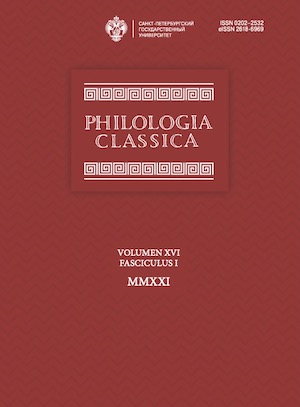Seneca’s Phoenician Women — Genre, Structure, Thematic Unity
DOI:
https://doi.org/10.21638/spbu20.2021.107Аннотация
This article revises current perspectives on the generic status, composition, and subject matter of Phoenician Women by Seneca. It adopts a new approach, focusing on selected elements of text organisation. In particular, emphasis is given to the construction of characters and the analogies and contrasts between them which were already of interest to ancient poetics and rhetoric. Moreover, the article refers to observations, accurate but isolated and largely ignored, made by scholars who recognised Seneca’s originality and suggested that his plays might have been inspired by the declamatory tradition and should be read in the context of evolving postclassical literature. By adopting this perspective, it becomes possible to bring together a large number of partial conclusions that are related to Phoenician Women as well as other plays by Seneca. What is more important, the work brings to light the purposeful composition of the drama and its thematic unity, allowing us to return to the MS versions that until now have been replaced by conjectures, which often distort the meaning of the text. After dismissing the emendations and adopting a new method of reading, Seneca’s Phoenician Women can be regarded as complete and well-organised. The play has certain characteristic features of a tragedy, of all Seneca’s dramas, it is the one most inspired by the genre of declamation and the poetics of Seneca the Elder’s anthology, and it is an example of the use of plot material typical of tragedy for presenting the problem of pietas in all its complexity.
Ключевые слова:
Seneca the Younger, Phoenician Women, declamatory tradition in drama, Roman tragedy
Скачивания
Библиографические ссылки
Загрузки
Опубликован
Как цитировать
Выпуск
Раздел
Лицензия
Статьи журнала «Philologia Classica» находятся в открытом доступе и распространяются в соответствии с условиями Лицензионного Договора с Санкт-Петербургским государственным университетом, который бесплатно предоставляет авторам неограниченное распространение и самостоятельное архивирование.






